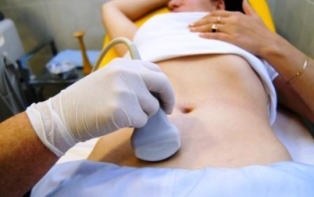Warikosnoje the enlargement of the veins of the small pelvis, or chronic pelvic pain is still an exotic disease with blurred diagnostic boundaries for many doctors.
This explains the fact that some of the doctors a long time to "notice" this disease in his patients, while others make this diagnosis almost every second Person suffers from constant unexplained pain in the abdomen.
Meanwhile, the timely detection of varicosity is a vein of the pelvis, in many respects depends on the quality of life of the patient, his ability to enjoy the intimate side of your relationship with a loved one and the ability to reproduce.
The phenomenon of chronic pelvic pain known to the doctors for a long time. But only recently known to be the most likely cause – warikosnoje the enlargement of the veins of the small pelvis. This disease, described for the first time, it was established in 1975 and is still not well enough investigated.

It is highly likely that this pathology develops according to the following algorithm:
- Venous Plexus in the small pelvis is a complex structure, such as the large vascular trunks, and the smaller veins. In the process of venous System of small pelvis in men and women differs in their structure, what causes sexual the specification for the disease – much more common especially in the case of the representatives of the weaker sex.
- Because of the constriction of the blood vessels, the full or partial closure of the venous bed of a river, changes in the Tonus of the vessel walls against the outflow of blood from the deep pelvic veins.
- In the result, Vienna is no longer their tasks in full, is less than the insufficiency of the venous valves is disturbed and the normal outflow of blood.
- In pelvic venous congestion, the reverse backflow of the blood through the vessels – it is the enlargement of the veins and the development of the varicosity provoked.start
Symptoms of varicose veins (varicosity) of the veins of the internal organs of the small pelvis significantly more common in women of childbearing age than in men. Most often the ovary Vienna suffering – in 85% of cases.
The principal symptom is pain, which logged more than 90% of patients. And here is the prevalence of this disease is not found among the population still: according to various studies ranges from 6% to 80%. Thus, a large difference in the "statement," due to the insufficiency of the qualifications of the diagnostician at the diagnostic position.
Causes and risk factors
Causes of pelvic varicosity all the changes in the body that can trigger the start pathological mechanism of this disease are:
| Anatomically-physiological cause varicosity | What can cause |
| The mechanical pressure on the pelvic veins |
|
| The change in the Tonus of the blood vessels |
|
| Blockage of the veins of the pelvis |
|

Factors at increased risk of varicosity of the pelvis are:
- hard physical work;
- not enough regular or unsatisfactory sexual life;
- Abuse in the private life interrupted sexual intercourse;
- a large number of pregnancies and births;
- common gynecological disorders;
- Contraception with hormone preparations;
- hormonal disorders in the body;
- A lack of exercise.
Classification and the stage of varicosity
In the medical field-induced separation of varicosity accepted due to the nature of the flow of the basin to varicosity of the veins of the perineum and the external genitalia (for example, lips) and the syndrome of venous plethoras of small pelvis. This classification has no great practical importance, since in most cases, patients experience both forms at the same time, how provoking the emergence of each other.
There you will find also a classification of the disease according to the cause of its occurrence. In this context, varicosity parts of the basin:
- primary – caused by the unsatisfactory work of the venous valves;
- Secondary – develops as a complication of an existing inflammatory, gynaecological or oncological diseases of internal organs.
It is also an attempt of classification of the disease on the basis of the degree of expression of the pathology. In this context, mark the 3 levels of pelvic varicosity:
| Phase | The characteristic features of the affected veins | |
| Diameter (in mm) | Localization | |
| The first | less than 5 | each pelvic venous Plexus |
| The second | from 6 to 10 | the ovaries or the uterus |
| The Third | 10 more | total defeat of the veins of the small pelvis |
As dangerous and are to follow
This type of vascular pathology is not considered a deadly disease. Discovered in time, it is well suited for the medical correction. But the whole Problem is that it is so easy. Play your role and insufficient knowledge of the disease, and the low awareness of the majority of the diagnostician.

It turns out that patients suffer for years from this disease without knowing it. And in your body, in the meantime, there are a number of irreversible changes:
- varicosity progresses, the pathological process of the adjacent areas included the enlargement of the veins of the sexual organs (for example, varicosity Penis), Perineum and the lower extremities.
- Appears to be a persistent malfunction of the internal genital organs, which can lead to infertility or inability to bear the pregnancy in women.
- Against the background of pain syndrome of various psycho-develop emotional disorders, according to the nature of neurasthenia.
- Because of the chronic pain, while the increasing intimacy of the human Sex.
- The rare and at the same time, the serious complications of pelvic varicosity as venous thrombosis and thromboembolism of the lung. They come in about 5% of the cases, but always fatal.
Symptoms
To the typical symptoms of varicose veins and the vessels of the small pelvis, which will include treatment to a doctor for treatment:
- Chronic Pain. Pain is mostly localized in the lower abdomen, sometimes "give" in the groin area and lower back. Strengthened in the second half of the menstrual cycle in women, after intercourse or prolonged standing on the feet.
- Discharge from the genital tract. This is typical "female" Symptom. This discharge is normal appearance and not about a strange smell. Ill alarming their unusually large number.
- The external signs of the disease – spider veins or the strengthening of the venous pattern on the hips, in the crotch area – occurs in approximately half of the patients. In men, it can to slight varicose veins on the Penis.
- Menstrual disorders in women and urinary tract in patients of both sexes seldom and testifies to the advanced Form of the disease.
When should I consult a doctor and to what?
The reason for going to the doctor can be any of the above symptoms. This one may not hesitateas to the clarification of the true causes of the complaints and the purpose of effective treatment is a lot of time.
The competent specialists for this disease, the doctor is флеболог, but for women, the original visit to the gynkologen to ensure that, in the absence of concomitant gynecological diseases can.

Diagnosis
According to the American researchers, in the early 2000s only 2% of patients with varicosity pool, the correct diagnosis is made initially. Sometimes a result of diagnostic errors was the removal of the genitalia in women, although it might have been avoided, if it used the exact methods of diagnostics of pelvic varicosity:
- Ultrasound and Doppler examination of the veins – the ability to assume, varicosity;
- Phlebography – invasive investigation with high accuracy to determine the presence and extent of a disease;
- Laparoscopy is indispensable in differential diagnosis of varicosity of the pelvic organs from the similar symptoms of gynecological diseases (endometriosis, uterine fibroids, coleitis).
- Selective variography studies of the condition of the veins with the help of contrast medium, is considered to be the most objective diagnostic method.
- Computer tomography or nuclear spin tomography can have more accurate Details of the durchflieens of the disease and differentiate it from other diseases with similar symptoms (joint disease, Crohn's disease, and others.).
Treatment methods
In the treatment of varicosity of the basin put the following tasks:
- Normalization of vascular tone;
- Improvement of the nutrition of the tissue;
- to prevent jams and possible complications.
The treatment of varicosity of the vessels of the small pelvis at the same time can go in several directions, wherein a surgical Intervention is necessary only on 3 stages of the disease.
| Therapeutic Direction | Concrete Measures |
| Therapy without medication |
|
| Drug Therapy |
|
| Surgical Procedures |
|
| Treatment Of Folk Ways | the use of herbal remedies on the Basis of dandelion, chagas, and horse chestnut |

Predictions and prevention measures
To heal varicose veins of the pelvis without surgery is almost impossible. With the help of the conservative medicine can significantly alleviate and even eliminate most of the unpleasant symptoms and reduce the risk of complications of the disease. Operation does not give an absolute guarantee that the disease does not come back.
In order to prevent the recurrence of the disease always remain in the right way of life:
- not to smoke;
- not hormones consume uncontrollably;
- more moving and less on the legs, motionless;
- anti-sclerotic diet with lots of fresh vegetable food;
- daily implementation of a complex therapeutic gymnastics and breathing exercises to maintain the health of the blood vessels;
- after the surgical Operation for varicosity, compression wear stockings and a preventive dose of prescribed medication venotonics.
Pelvic varicosity – the Hidden Beach, women's health, a peculiar disease-a Phantom, difficult to detect, but the suffering of him is quite Real.
The main Symptom of the disease – chronic pelvic pain, which may interfere with the patient a long time and a source of the rejection of the many joys of life. Tolerate must not take such complaints to the doctor!
Upon the occurrence of specific symptoms should be clear that it is not normal, and immediately the help of a specialist.




































